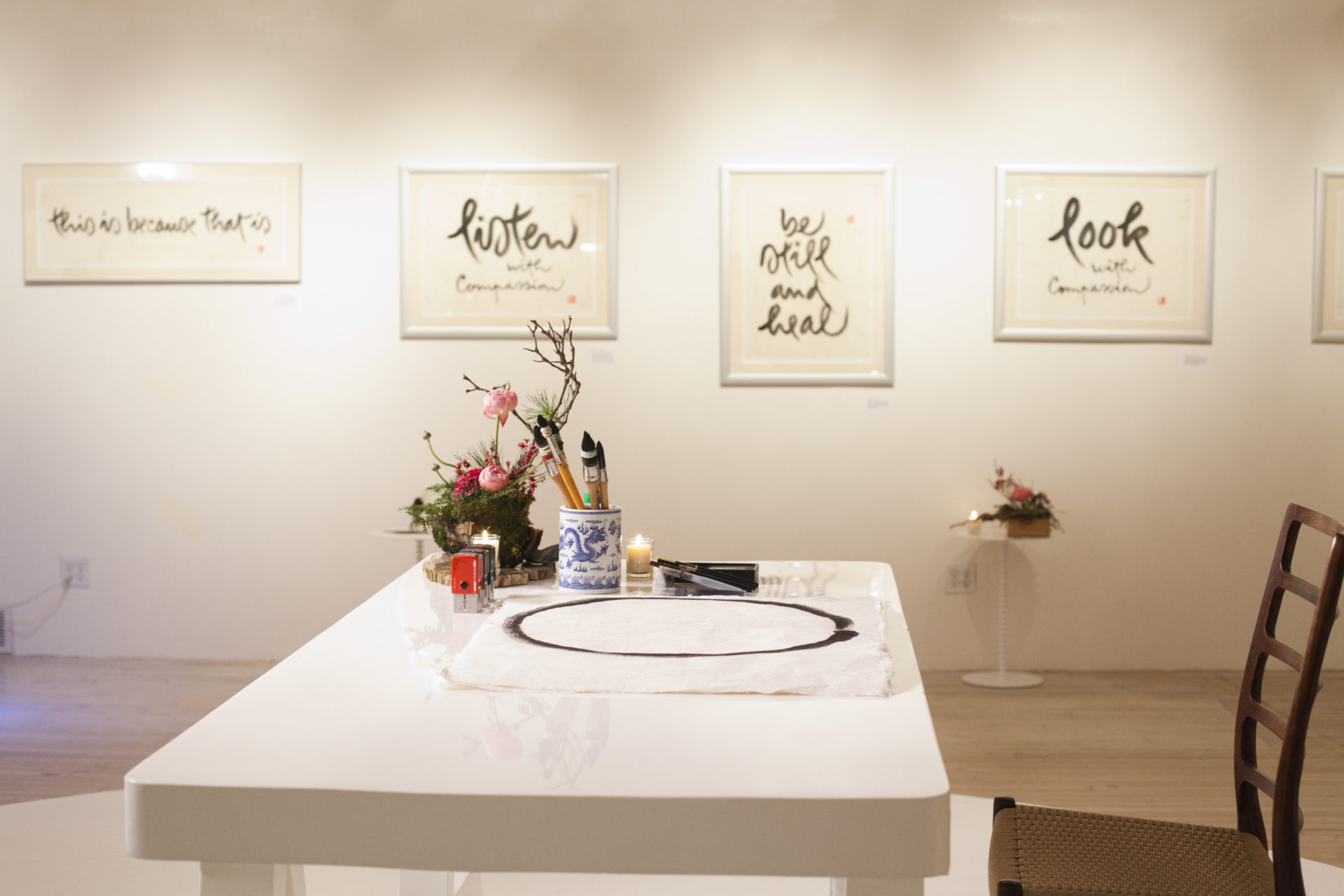By Bas Bruggeman, Han Nguyen, and Felipe Viveros
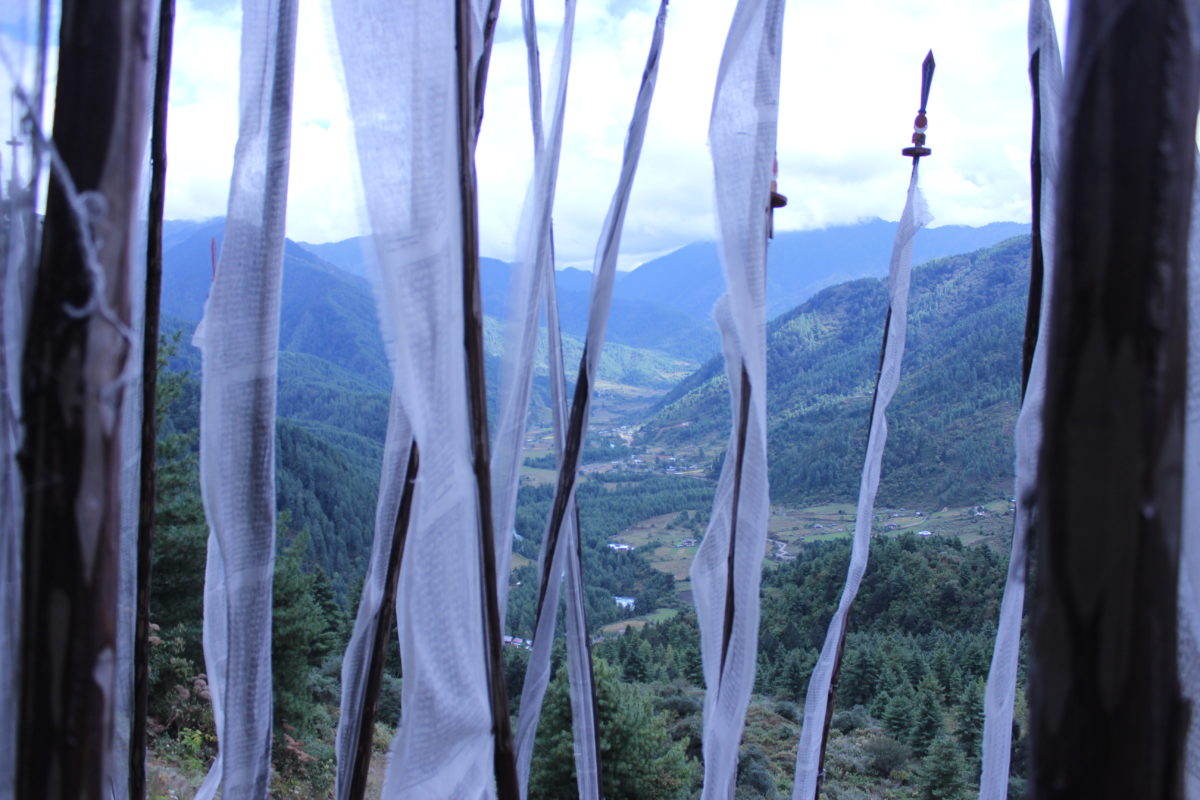
“Being young today, you have a world to invent. The old world has dead-ended, and a new reality is about to emerge. It is a moment of crisis and transition—full of danger and full of opportunity. And since everything starts as a seed, a thought in the mind,
By Bas Bruggeman, Han Nguyen, and Felipe Viveros

“Being young today, you have a world to invent. The old world has dead-ended, and a new reality is about to emerge. It is a moment of crisis and transition—full of danger and full of opportunity. And since everything starts as a seed, a thought in the mind, it is up to us what to cultivate. That is why we need to have a vision for the future.”
--Dr. Ha Vinh Tho, Program Director of the Gross National Happiness (GNH) Centre in Bhutan, opening speech at the Wake Up GNH Retreat
Seeds were planted on a spring evening at the University of Cambridge during the first Wake Up University Tour in 2011. We were sitting with Brother Phap Linh, Sister Hien Nghiem, and a group of students. The room was filled with warm light, and the collective energy of mindfulness was vibrant. A circle was formed to contemplate these questions: “How can we keep the fire of our deepest aspiration alive? How can we, as the young generation, respond to the situation of our planet?”
Following our breath, we listened to stories of frustration about environmental engagement, and of how the social machinery was making us move further away from our initial aspirations, but also stories of transformation, showing that there was a way to align our inner aspirations with the external world. Toward the end of the session, Brother Phap Linh shared with us that the greatest obstacle was our fear and that only from a place of acceptance could we truly act. “How can we create an environment that cultivates the practice of mindfulness and non-fear in us, thus helping us sustain our inner fire?” This was among the burning questions that we kept in our hearts as we left this circle.
Five months later, we found ourselves in the School of Youth for Social Service (SYSS) in Saigon, practicing Touching the Earth and sharing a discussion with the first members of the Order of Interbeing. What a powerful experience it was to connect to our stream of spiritual ancestors and predecessors. We became aware of the present moment, the moment of being together. In this place, about forty years ago, amidst dogmatism, violence, destruction, and death, more than 10,000 young people came together to cultivate peace and find ways to relieve suffering by applying Buddhist practice in concrete actions that responded to the societal context. Feeling inspired, one of our friends asked the elders, “How can we continue the SYSS?” “As soon as you ask yourself this question, you have already started to continue the SYSS,” one of them responded.
Present Histories
Connecting the history of the SYSS to our present, we asked ourselves, “What is engaged Buddhism in the twenty-first century? What are our own sufferings and challenges as well as those of our contemporary society, and how do we learn to cultivate happiness and relieve suffering within ourselves and in society amidst these conditions?” Over the course of the last three years, our Wake Up team of seven young people from various countries in Europe (the Netherlands, the UK, Italy, and Germany) has been co-investigating this web of interconnected questions by practicing and working together to give rise to concrete projects in Europe and Asia. Project-based retreats or retreat-based projects, as we call our ventures, are inner and outer journeys to find ways to deepen our understanding of ourselves and one another, to build Sangha, and to unite the spiritual dimension and the working dimension.
An in-breath naturally leads to an out-breath. Filled with these aspirations and questions, we encountered Ha Vinh Tho, a Dharma teacher in the Plum Village tradition, on our journey. About one year after our circle in Cambridge, Tho was appointed the Program Director of the Gross National Happiness (GNH) Centre in Bhutan. From the beginning, he has emphasized the common aspirations that the Gross National Happiness Centre and Wake Up movement share, and he mapped out possibilities of collaboration. The Four Noble Truths and the Noble Eightfold Path, being at the core of engaged Buddhist practice, formed an inspiring dialogue with the development philosophy of GNH, which measures progress in relation to the happiness and well-being of all living beings, and explores a way toward a paradigm shift in order to bring about equilibrium between mental and material wealth, human needs, and the needs of nature. Seeing the potential that lay in the cross-pollination of these two approaches, we have continuously looked for ways to connect them in our projects.
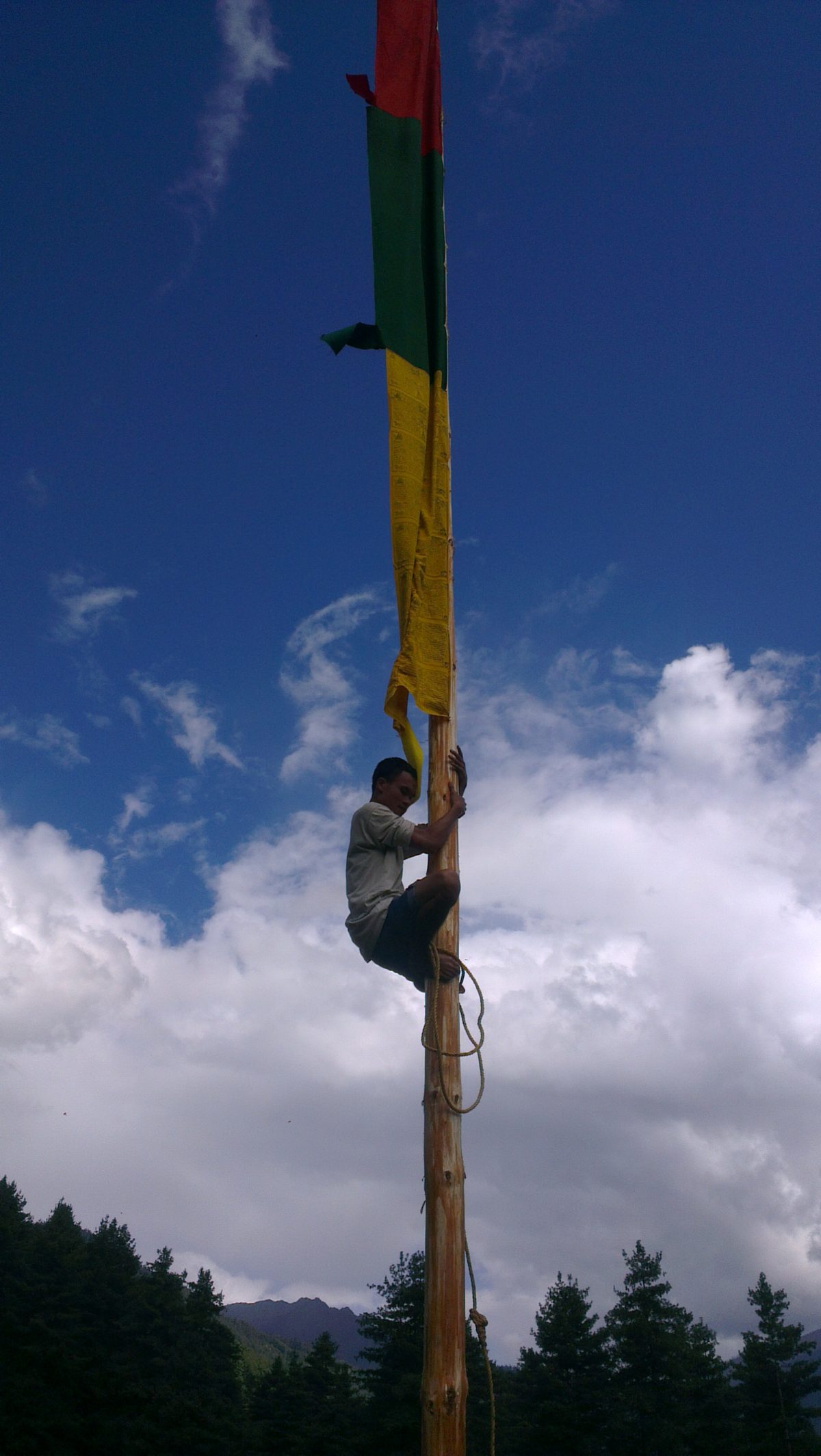
From Aspiration to Realization
Tho has been very generous toward us, supporting us with his presence and wisdom during Wake Up Retreats at the European Institute of Applied Buddhism each year. After experiencing a wonderful intergenerational Wake Up summer retreat on “The Economics of Happiness” in Germany, we then teleported the economics of happiness back to the country where it emerged. In 2013, we helped manifest a twenty-one-day, project-based retreat for young people on the future GNH Centre site in Eastern Bhutan.
The first Wake Up GNH Program was born out of the awareness that our generation is growing up in a time of transition, with tremendous changes and challenges confronting our Earth, our society, and ourselves. Taking the practice of mindfulness as the basis, we retreated into nature for three weeks to reconsider how we live our lives, and to reflect on our impact on our society and planet. The intention was to create a mutual learning experience of living in community and nature, to learn new practical skills for our hands and hearts, and to start the collective process of developing a vision of how we can make a difference in our daily life and work. As we explored the relation between inner and social transformation through our daily activities, we contemplated how the philosophy of GNH could be of value to our lives.
Stepping on the wild territory of the retreat site during the preparation phase, we encountered questions like, “What do we need to be happy on a daily basis? How do we create conditions of happiness for community living in this environment?” These questions reconnected to the ones we had asked in Cambridge and Saigon, forming the end of a cycle and the beginning of a new phase in our practice.
Hermitage among the Clouds
We spent ten days turning the jungle into a retreat space, and by the time the rest of our group arrived, almost all the preparations had been completed. With the help of local villagers, we built from scratch a camp that consisted of a wood-fired kitchen, two dormitories, a compost toilet, and a bear-proof camping area. We tapped water from a nearby spring, and presto: our dreams were beginning to come true.
Twenty-five participants came from places as diverse as Alaska, Hanoi, Hamburg, and Thimphu, to live simply and focus on the practice. We engaged in basic activities such as cooking, cleaning, making fires, and boiling water in order to sustain the camp. Daily morning meditation was a great way to set an intention for the day and blend our different traditions. While TV and the Internet were introduced to Bhutan only ten years ago, Bhutanese youth are not immune to the global trends of materialism, substance abuse, and loss of cultural traditions. However, we could sense a strong faith among them, based on respect for the Earth and all sentient beings. Hence, Dharma sharing proved to be another infallible bonding method that helped deepen our understanding of one another and further our connection, as we discovered that we all had our strengths, weaknesses, and struggles as young people searching for a path.
Raising the Pole of Brotherhood
At the beginning of our retreat, we planned a Puja, a traditional Buddhist ceremony to remove obstacles and purify the land. This was also an opportunity to meet with the nomads, the elders, and the peasants who lived nearby. As part of the preparations for the ceremony, our first collective task was to search for, cut, and carry a fifty-four-foot tree that would be raised during the opening ceremony for prayer flags. The flags would carry our prayers and aspirations for all the people who were suffering on the planet to find well-being, happiness, and peace. Finding an appropriate tree for such a commendable job did not prove to be so difficult, since we were in the middle of a fragrant blue pine forest. The real challenge was to carry the fallen, quite heavy tree to the only clear space in the forty-six acres that constitute the GNH territory. With all our strength and might, ten of us lifted and then transported that precious tree—a real exercise in community building.
Our guests from the local community crossed the glacier-fed river to join the Puja ceremony. The burning incense smudging the air, the sounds of the bells, chants, prayers, and horns shifted something inside of us. We were opening up to new possibilities. After the blessing, we were ready to raise the pole with bright and colourful flags attached to it. This took a lot more than plain muscle. After several failed attempts to raise it by pulling the ropes that were tied to the pole and pushing it from beneath, we finally did it. The experience was a gift, showing us how we could bridge our many differences to raise a common prayer for the well-being of all and for the future generations.
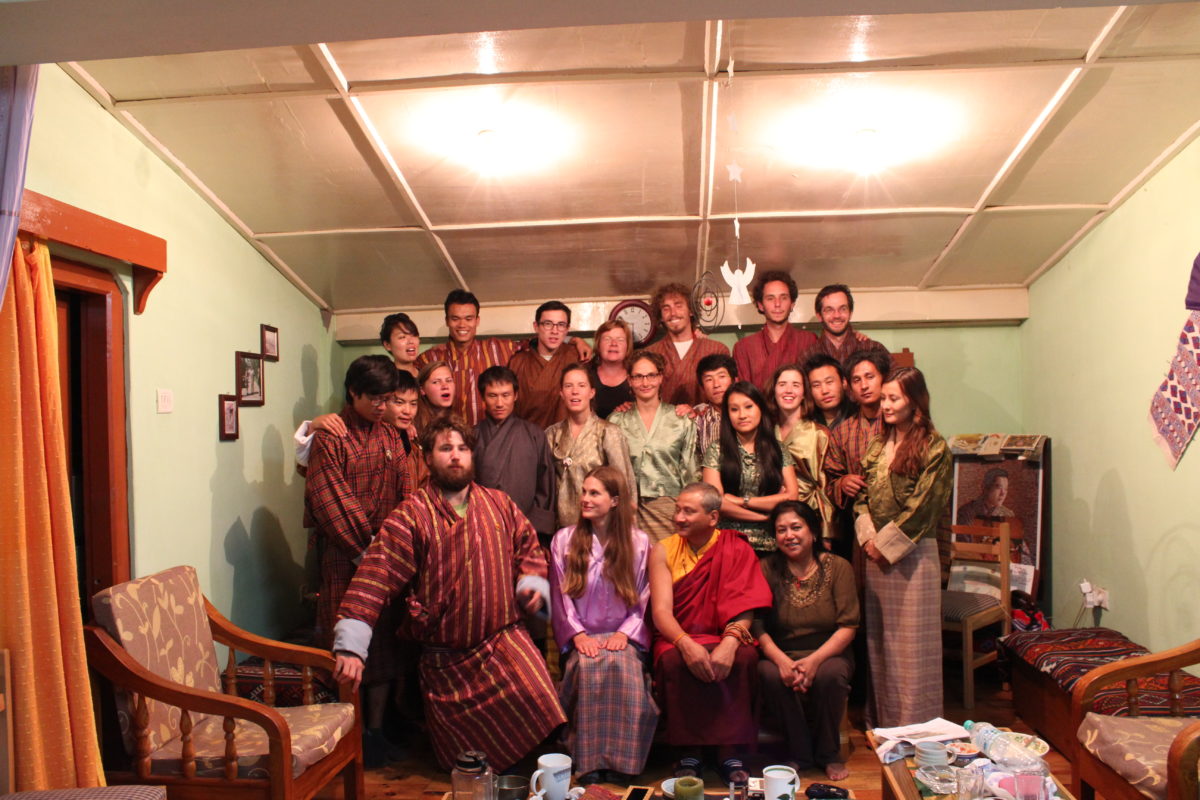
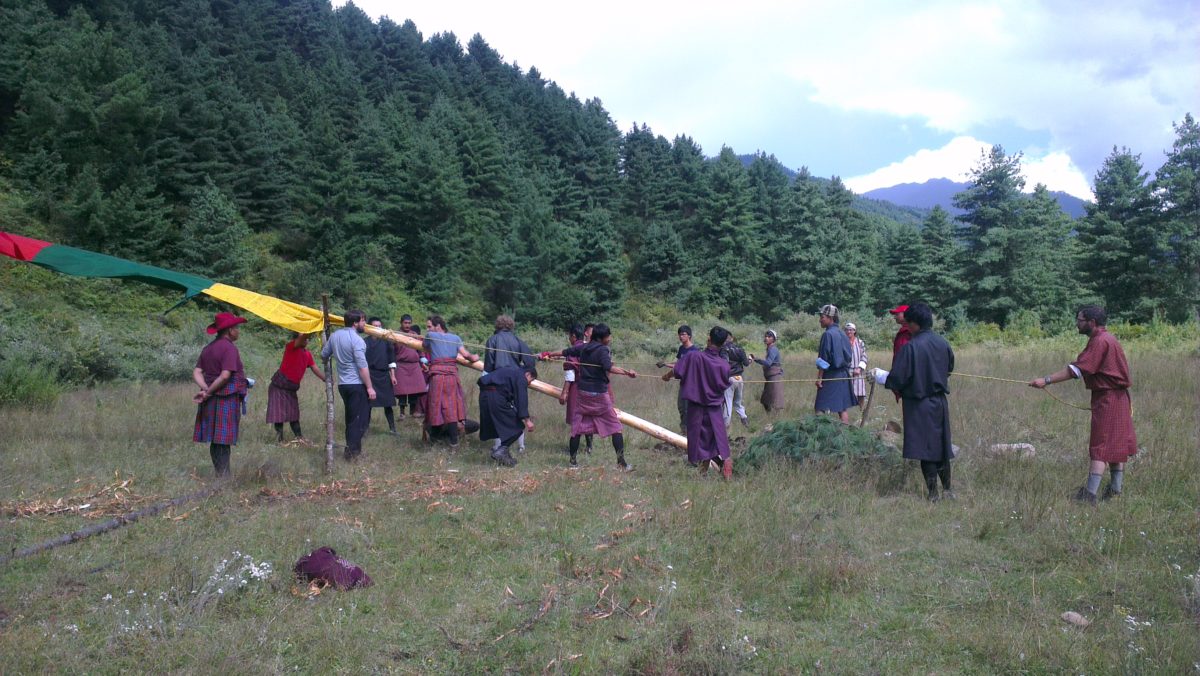
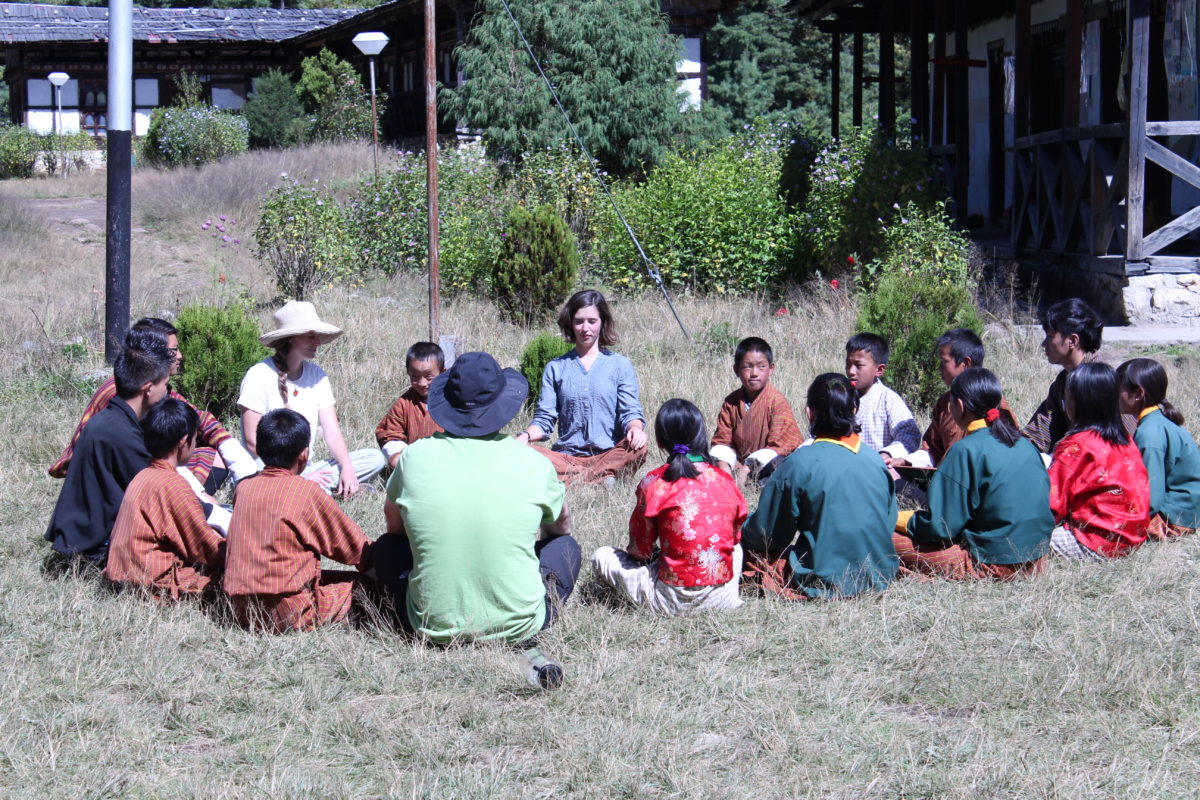
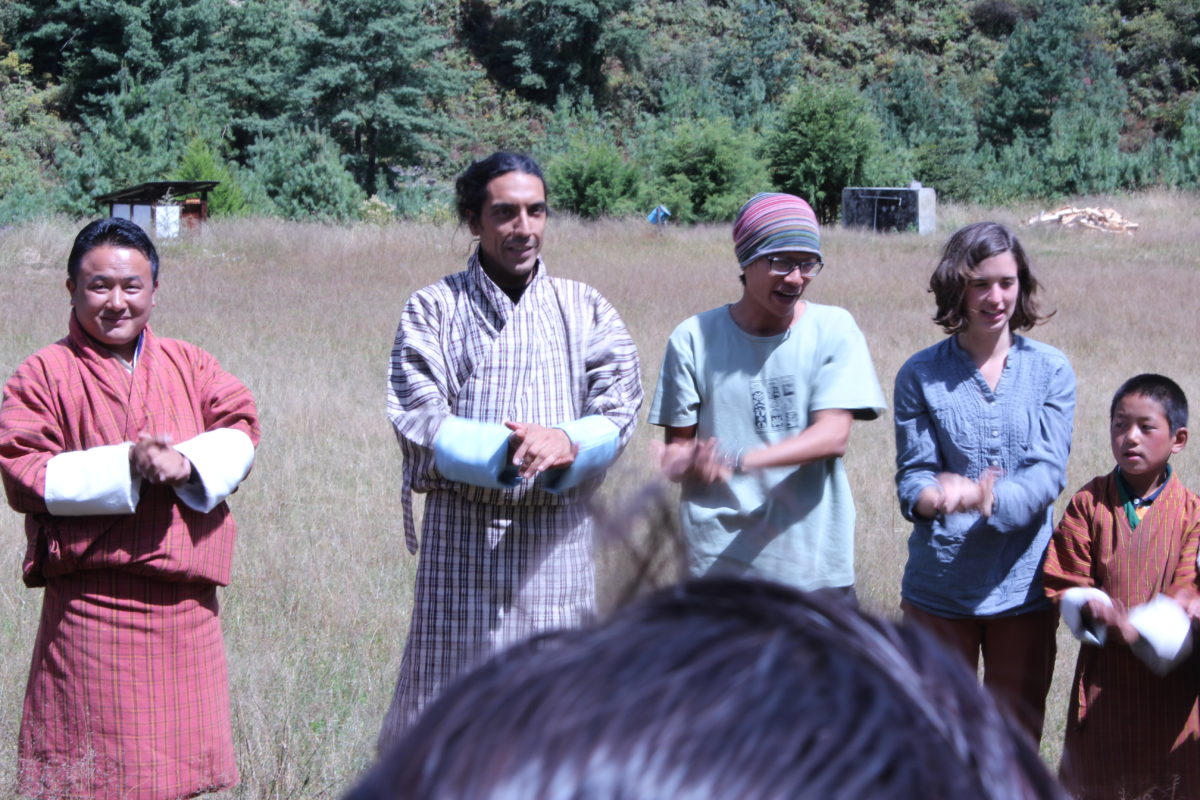
Creating Possibilities
This retreat was a humble attempt to create possibilities of community living and to experience the conditions that create happiness. The participants—many of us at points of transition in our lives—were able to train and practice living in harmony in community. Living together in nature, we were able to be in touch with the conditions that make a more stable happiness. The participants left with a strong sense of community, with inner transformation, and with new answers and questions.
Jacoba Harm, a participant from Hamburg, shared, “Right now, a few days after Bhutan, the sun is shining and it is raining. There is a very beautiful rainbow at the horizon that invites me to go forward and to trust. More great programs like this will follow, and I feel I really want to be part of the young generation wanting to move something in today’s society. During the hiking in the mountains of Bumthang, I decided to apply for a specific education in university and to bring GNH back home. We all live together on one planet and in one community. I want to give more people the opportunity to enter this sustainable and new way of behaving, living, and working.”
This retreat was the manifestation of a painting we co-created with our thoughts, speech, and actions, and with our brotherhood and sisterhood. It showed us the miraculous interconnection between our inner and outer worlds, and was a priceless learning experience in community building.
Bas Bruggeman made it to a Plum Village youth retreat for the first time in 2008 and has been enchanted ever since. In 2013, he spent several months in Plum Village, joined the Wake Up tours in the US and UK, traveled to Vietnam, and organized Wake Up retreats in Germany and Bhutan. He wrote his master’s thesis in cultural anthropology on Plum Village practice and is currently the Youth Program Co-ordinator at the GNH Centre.
Han Nguyen, Precious Virtue of the Heart, is an active member of Wake Up Europe, based in Germany. She enjoys sitting, walking, smiling, drinking tea, observing the sky, and playing with children.
Felipe Viveros, True Fruit of the Practice, is a Chilean writer based in the UK. He shares his time between gardening, working on social and environmental projects that engage young people, and doing an MSc in Holistic Science at Schumacher College.

